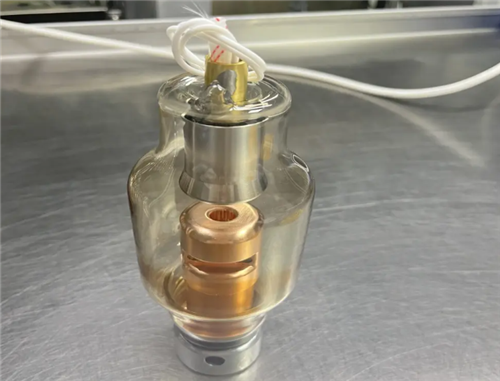In industrial applications, X-ray technology plays a key role in non-destructive testing, quality control, and material analysis. At the heart of this technology is the industrial X-ray tube, a precision device that emits X-rays when powered by a high voltage. While these tubes are extremely useful across a variety of industries, they require expertise and careful operation to ensure safety and optimal performance.
What is an industrial X-ray tube?
An industrial X-ray tube is a vacuum-sealed device that produces X-rays through the interaction of high-energy electrons with target materials. When the tube is powered, the electrons are accelerated toward the target, emitting X-rays. These X-rays can penetrate a wide range of materials, allowing for detailed imaging and analysis without causing any damage to the object being inspected.
The importance of expertise
Operating an industrial X-ray tube is not a task that can be performed by untrained personnel. Only qualified experts with in-depth knowledge of X-ray technology should be involved in the assembly, maintenance and disassembly of these tubes. This is crucial for the following reasons:
Safety issues: X-ray tubes operate at high voltage and emit radiation, which can be dangerous if not managed properly. Specialists are trained to implement safety protocols to minimize radiation exposure to operators and nearby personnel.
Technical expertise: Assembling and maintaining X-ray tubes requires a thorough understanding of their components and functions. A qualified technician can troubleshoot, make necessary repairs, and ensure the tube operates efficiently.
Regulatory compliance: Many industries are subject to strict regulations regarding the use of X-ray technology. Qualified experts who are familiar with these regulations can ensure that all operations comply with legal and safety standards.
Processing and maintenance best practices
Given the fragile nature of industrial X-ray tubes, proper operation and maintenance are critical to extending their life and ensuring safety. Here are some best practices to consider:
Avoid strong shock and vibration: Industrial X-ray tubes are usually made of fragile glass and are therefore easily damaged by strong shock or vibration. When transporting or installing the tube, be sure to handle it with care and use appropriate cushioning materials to prevent any physical impact.
Regular inspection: Routine inspections by qualified personnel can help detect potential problems before they escalate. Technicians should inspect the pipes for signs of wear, damage, or unusual performance.
Proper storage: When not in use, the X-ray tube should be stored in a secure, designated area to minimize the risk of accidental damage. This area should be clearly marked and accessible only to authorized personnel.
Training and certification: Ongoing education and training is essential for the experts who operate X-ray tubes. This ensures they are up to date on the latest safety protocols, technological advances, and regulatory changes.
in conclusion
Industrial X-ray tubes are powerful tools that provide critical insights to a wide range of industries. However, their effective and safe use depends on the expertise of qualified experts and adherence to best practices. By prioritizing safety, proper operation, and ongoing training, industries can fully realize the potential of X-ray technology while protecting their personnel and equipment. As we continue to advance in technology, the importance of understanding and respecting the complexities of industrial X-ray tubes will only grow.
Post time: Nov-25-2024



